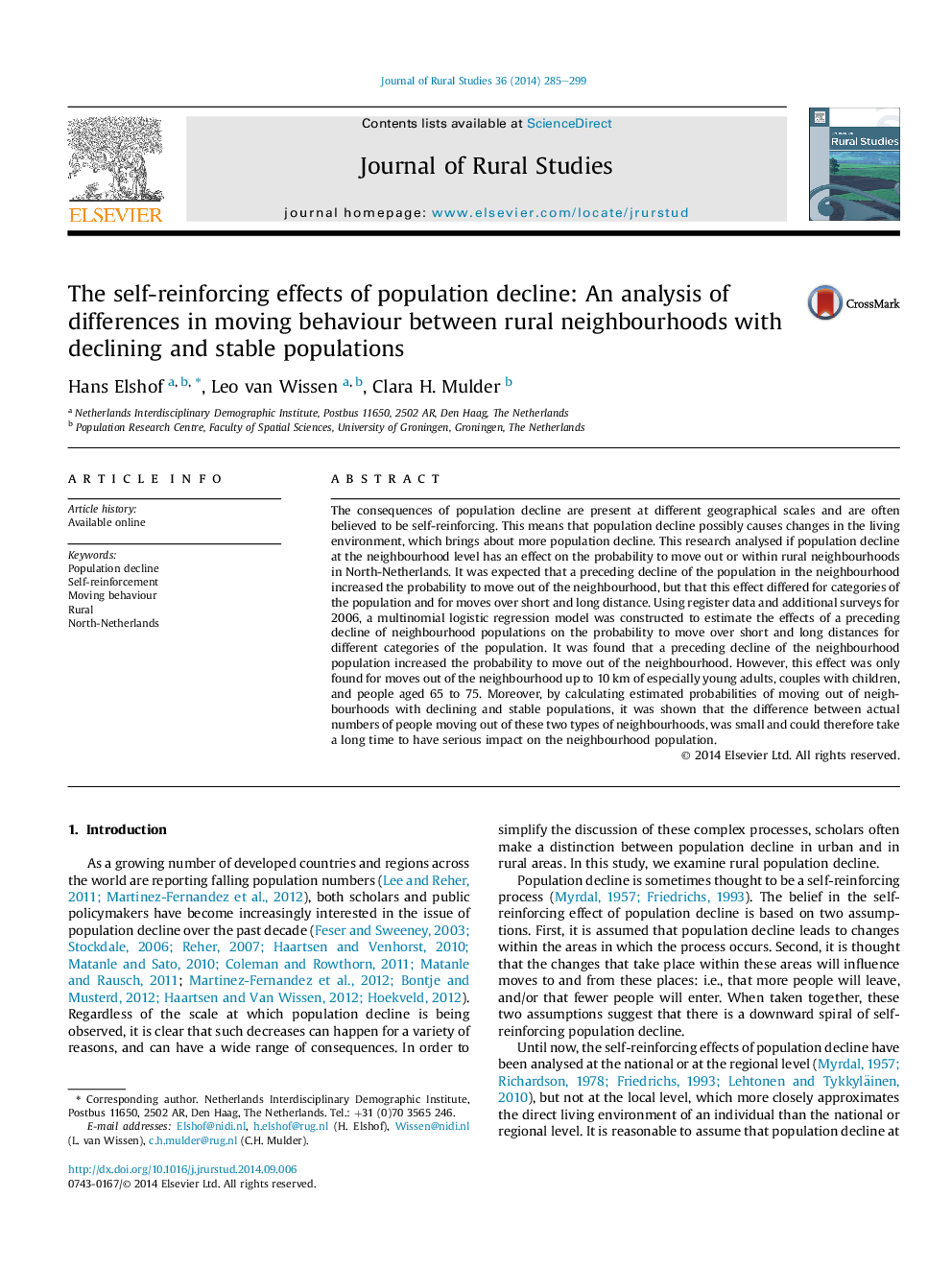| کد مقاله | کد نشریه | سال انتشار | مقاله انگلیسی | نسخه تمام متن |
|---|---|---|---|---|
| 6545755 | 159972 | 2014 | 15 صفحه PDF | دانلود رایگان |
عنوان انگلیسی مقاله ISI
The self-reinforcing effects of population decline: An analysis of differences in moving behaviour between rural neighbourhoods with declining and stable populations
ترجمه فارسی عنوان
اثرات خود تقویت کاهش جمعیت: تجزیه و تحلیل تفاوت در رفتار حرکتی میان محله های روستایی با جمعیت های کم و پایدار
دانلود مقاله + سفارش ترجمه
دانلود مقاله ISI انگلیسی
رایگان برای ایرانیان
کلمات کلیدی
کاهش جمعیت، خود تقویت رفتار حرکتی، روستایی، شمال هلند،
موضوعات مرتبط
علوم زیستی و بیوفناوری
علوم کشاورزی و بیولوژیک
جنگلداری
چکیده انگلیسی
The consequences of population decline are present at different geographical scales and are often believed to be self-reinforcing. This means that population decline possibly causes changes in the living environment, which brings about more population decline. This research analysed if population decline at the neighbourhood level has an effect on the probability to move out or within rural neighbourhoods in North-Netherlands. It was expected that a preceding decline of the population in the neighbourhood increased the probability to move out of the neighbourhood, but that this effect differed for categories of the population and for moves over short and long distance. Using register data and additional surveys for 2006, a multinomial logistic regression model was constructed to estimate the effects of a preceding decline of neighbourhood populations on the probability to move over short and long distances for different categories of the population. It was found that a preceding decline of the neighbourhood population increased the probability to move out of the neighbourhood. However, this effect was only found for moves out of the neighbourhood up to 10Â km of especially young adults, couples with children, and people aged 65 to 75. Moreover, by calculating estimated probabilities of moving out of neighbourhoods with declining and stable populations, it was shown that the difference between actual numbers of people moving out of these two types of neighbourhoods, was small and could therefore take a long time to have serious impact on the neighbourhood population.
ناشر
Database: Elsevier - ScienceDirect (ساینس دایرکت)
Journal: Journal of Rural Studies - Volume 36, October 2014, Pages 285-299
Journal: Journal of Rural Studies - Volume 36, October 2014, Pages 285-299
نویسندگان
Hans Elshof, Leo van Wissen, Clara H. Mulder,
